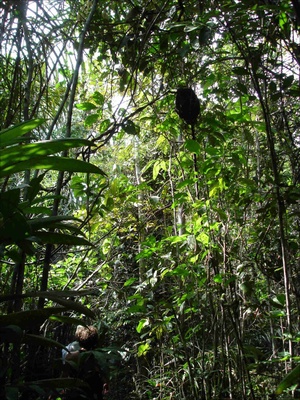Team: Kirsten Thonicke, Boris Sakschewski, Alice Boit, Werner von Bloh, Anja Rammig
Externally funded projects: ROBIN (EU FP7), AMAZALERT (EU FP7), International Research Training Group (IRTG) on Dynamical Phenomena in Complex Networks (DFG)
Regional focus: Central America, Amazonia
Background: In reality, an ecosystem contains manifold plant species, with each of them having a particular niche and function within the ecosystem. The stability of an ecosystem and its potential to adapt to a changing environment depends strongly on this (functional) diversity. Consequently also ecological tipping points, i.e. critical thresholds beyond which an abrupt shift between alternate ecological stable states occurs, are most sensitive to this diversity.

Photo by F. Langerwisch
Research goals and questions: Enhancing the degree of diversity implemented in large-scale vegetation modeling allows us (A) exploring the effects of plant functional diversity on the elasticity and stability of biomes under climate and land use change, and (B) conducting a risk assessment for tipping in Amazon rainforests and the feedbacks to the climate system.
- How does functional diversity influence different ecosystem functions?
- When does a combination of degraded ecosystem functions endanger the stability of the ecosystem?
- How do ecosystem tipping points change the climate and influence the Earth system?
- How can we improve risk assessments for potential ecosystem tipping points?





